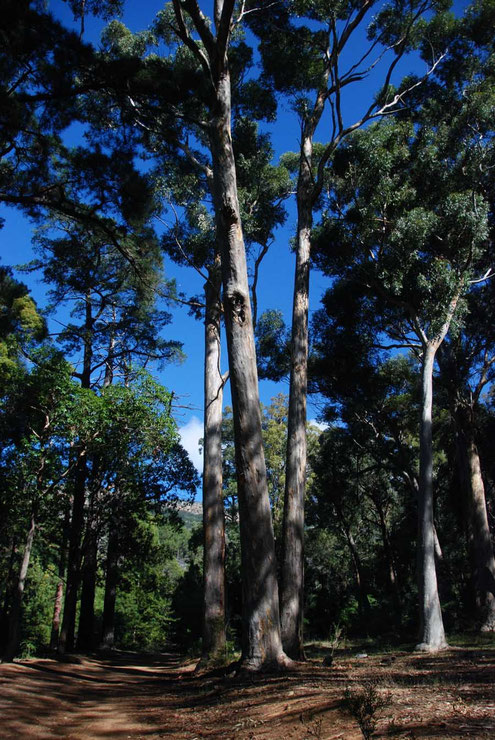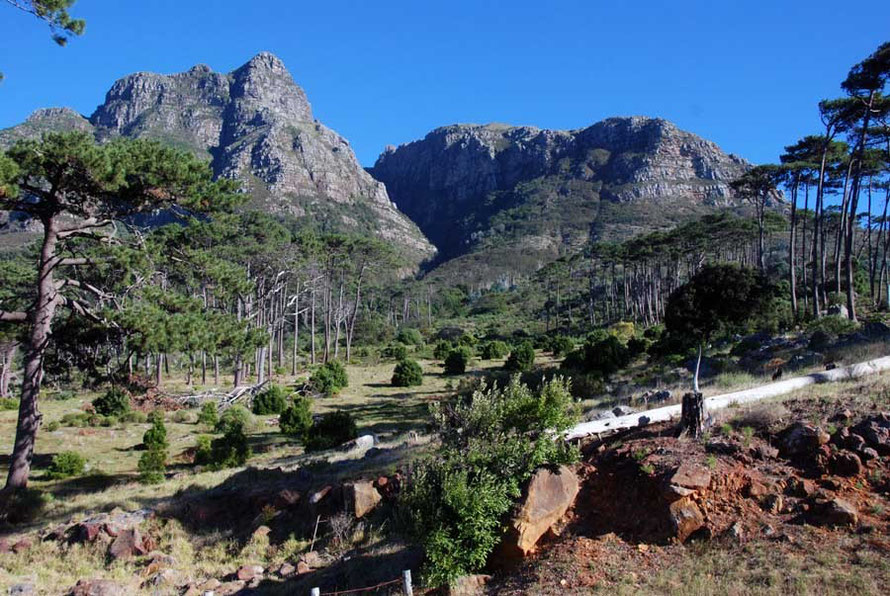VII. Invasion and Fire in the Cape Floral Region
A paper on the relationship between fire and the regeneration of fynbos vegetation concludes that,
Invasive alien plants represent a much larger threat to the conservation of biodiversity than fire alone, and the challenges associated with integrating fire and invasive alien plant management remain the largest problem facing the managers of the Table Mountain National Park (TMNP).
However, meeting the needs of biodiversity maintenance in a park
tightly surrounded by (a rapidly growing) urban population - 3.5m and counting - is not easy.
The narrow seasonal window of opportunity to conduct ecologically acceptable prescribed burns safely, a lack of funding, the need to incorporate the pre-fire treatment of invasive alien plants, and growing concerns about the safety of prescribed burning and legal liability in cases where prescribed burns escape, make the imperative to practice integrated fire and alien plant control very difficult to achieve.
The main invasive species in the TMNP are pines, eucalyptus and acacia trees. These can be seen in their full splendour at the Tokai Arboretum south of Cape Town. However they rob the soil of water, push out the delicate fynbos vegetation, and increase erosion (by literally adding fuel to fires and creating greater heat intensities that damage soils.)
Needless to say, these invasive species arrived with the invading Europeans. and yet their 'removal has been controversial however, as some of the pine plantations are recreational areas for people living in the wealthy suburbs adjacent to the park.'

In May 2012 The New7Wonders Foundation based in Switzerland confirmed Table Mountain’s status as one of the seven natural wonders of the world. Other top sites include Halong Bay, Iguazu Falls, Jeju Island and Puerto Princesa Underground River. The Amazon and Komodo Island remain on the provisional list.
Cape Town Mayor Patricia de Lille described the title as,
a great accolade for a unique wonder of nature that belongs to all the people of Cape Town, South Africa, Africa and the world. The New Seven Wonders title has great long-term marketing value for Cape Town and South Africa. The wonder becomes part of school curricula, it becomes a “must see” and “bucket list” item for travellers and explorers.
Sabine Lehmann, chairperson of the Table Mountain official supporters committee (OSC), said
The Philippines island that is home to the Puerto Princesa Underground River used to have three flights a week and now has 22 flights a week; the site used to attract an average of 150 visitors a day and now has 2 000 visitors a day.
Bernard Weber, Founder-President of New7Wonders, said
Along with possessing a biodiversity that is exceptionally important, given its proximity to a major city, Table Mountain is notable for the historic role it played in helping Nelson Mandela cope with his long years of imprisonment.
I could only find one reference to Table Mountain from Robben Island in Mandela's Long Walk to Freedom. He says, that when on a work detail collecting kelp from the shore and sea,
We marvelled at the daily drama of the weather over Table Mountain, with its shifting canopy of clouds and sun. p.553
But perhaps more important was the seafood stew the prisoners concocted with the conivance of the warders. This contained the mussels, clams, crayfish and perlemoen (abalone) harvested from the shore rockpools p.554
I'm not convinced by the 'inspiration-he-drew' theory of Weber above. Mandela later says on his transfer to Pollsmoor prison:
[The prison] is located on the edge of a prosperous white suburb [...]called Tokai [...] The prison itself is set amongst the strikingly beautiful scenery of the Cape [...] But this natural beauty was invisible to us behind Pollsmoor's high concrete walls. p.611
Still, if being amongst Bernard Weber's top seven world sites increases flights to Cape Town seven-fold that's got to be a good thing, right?




